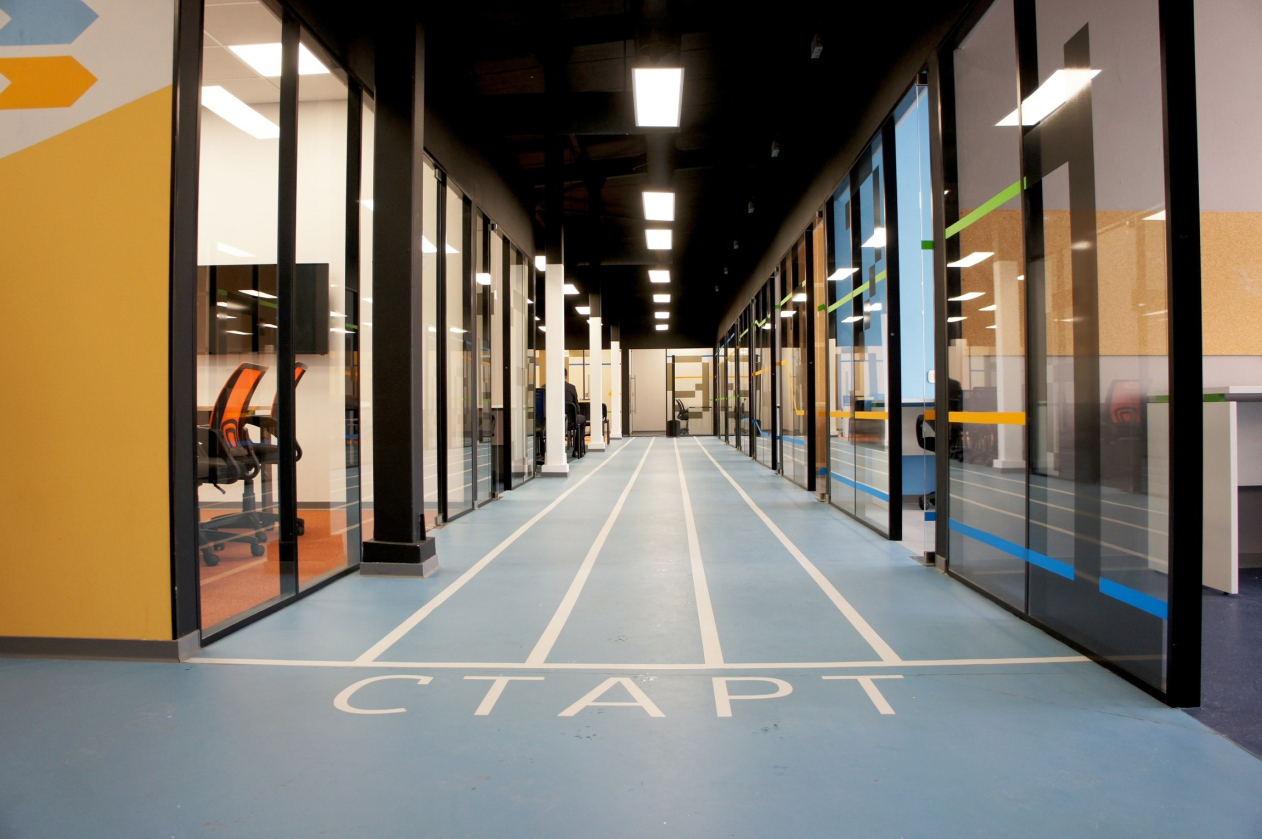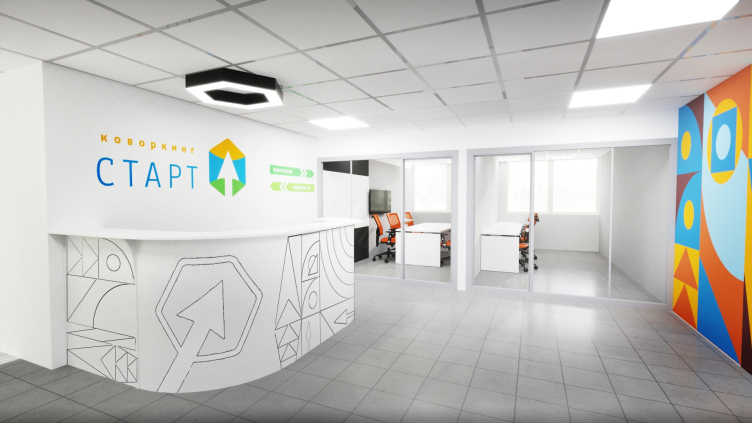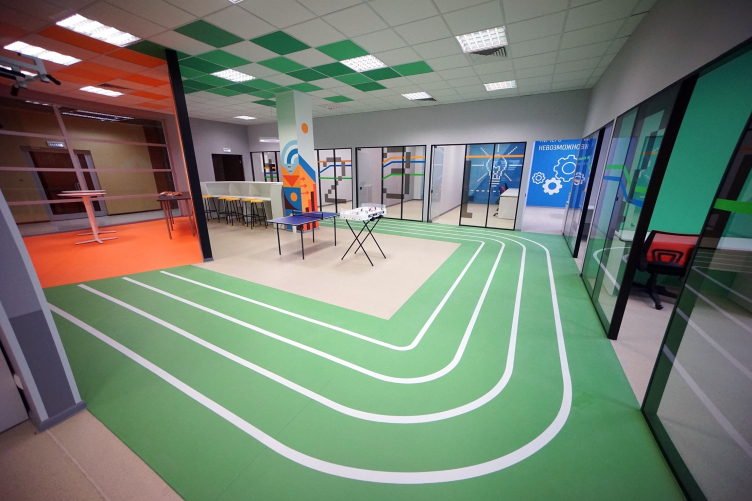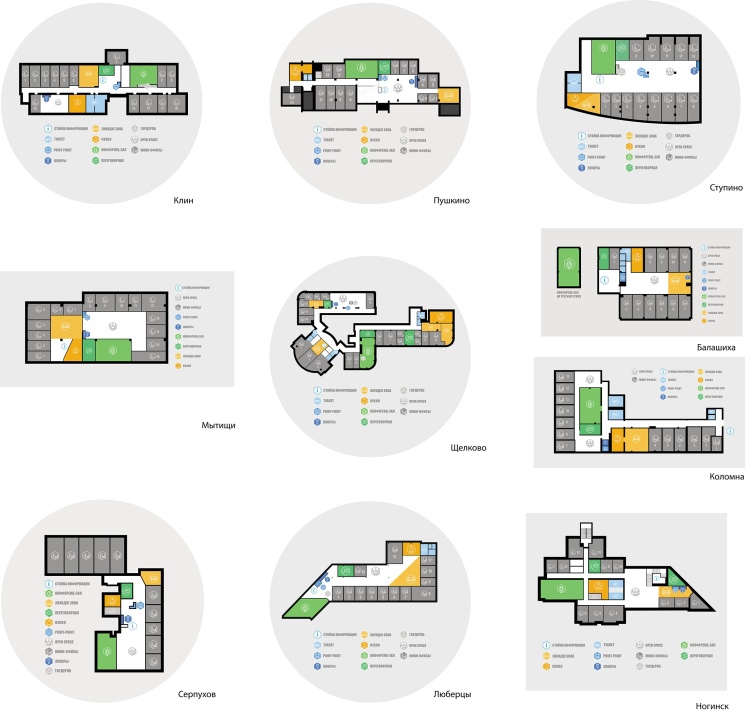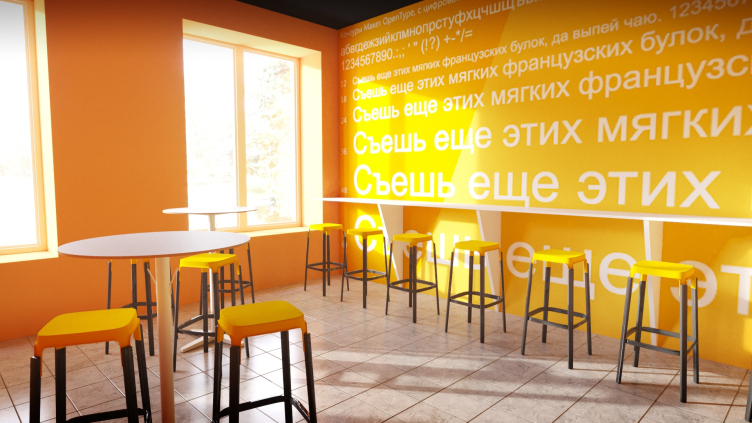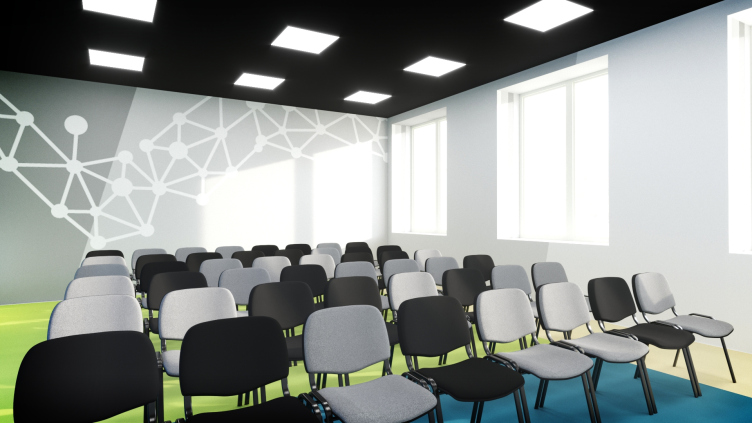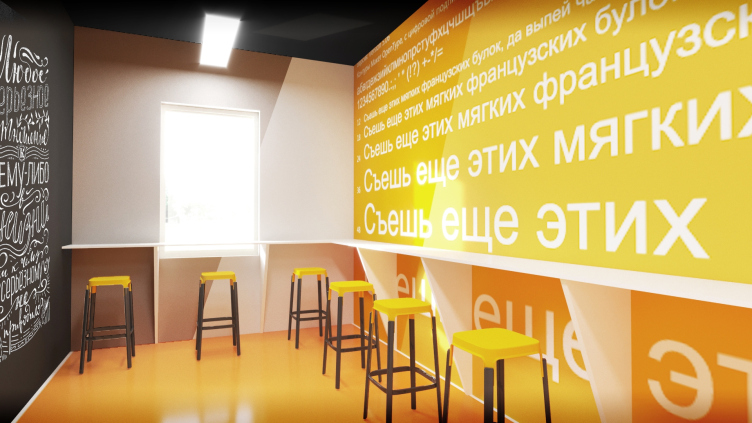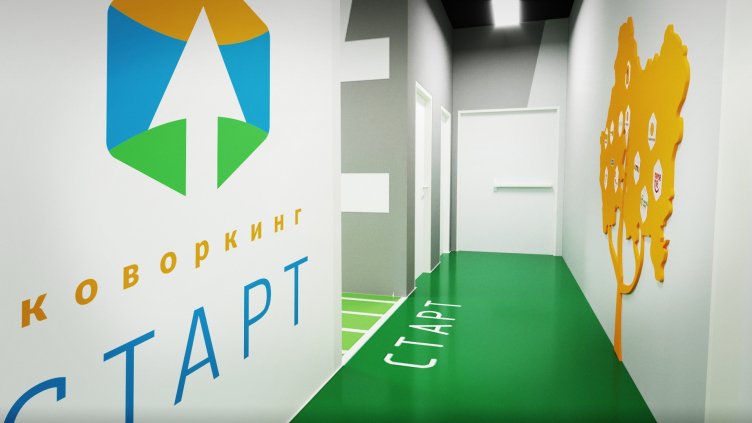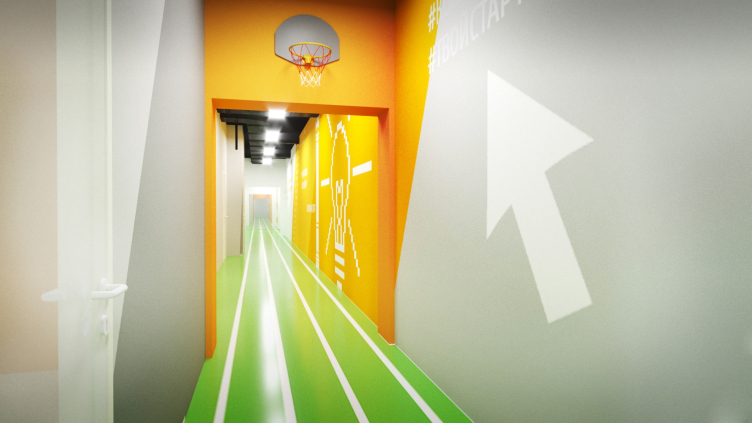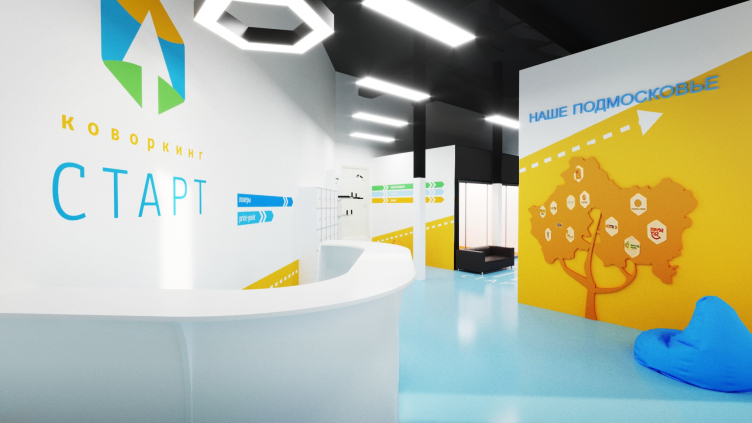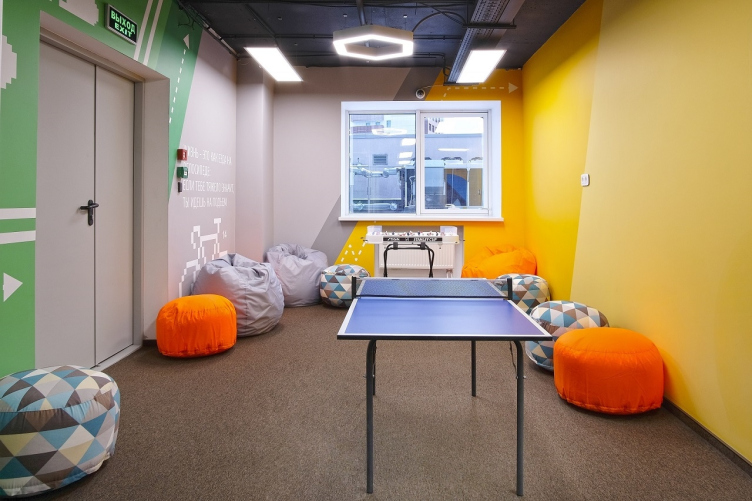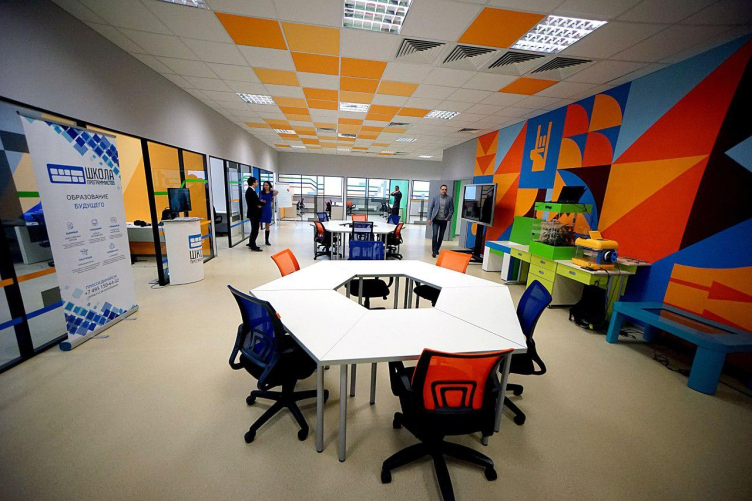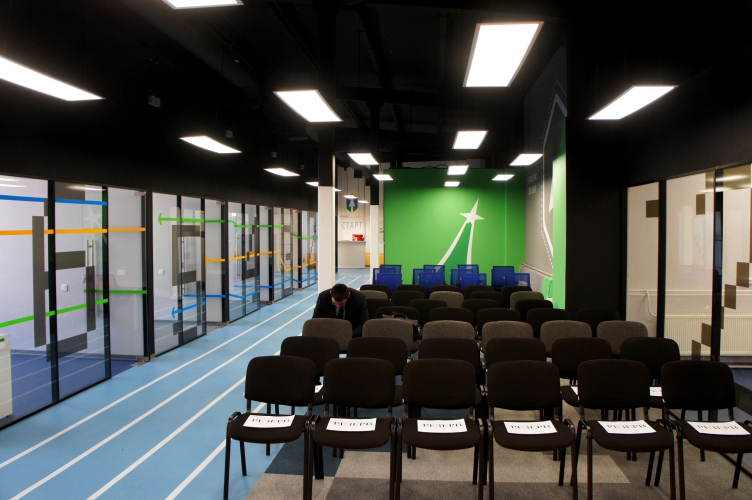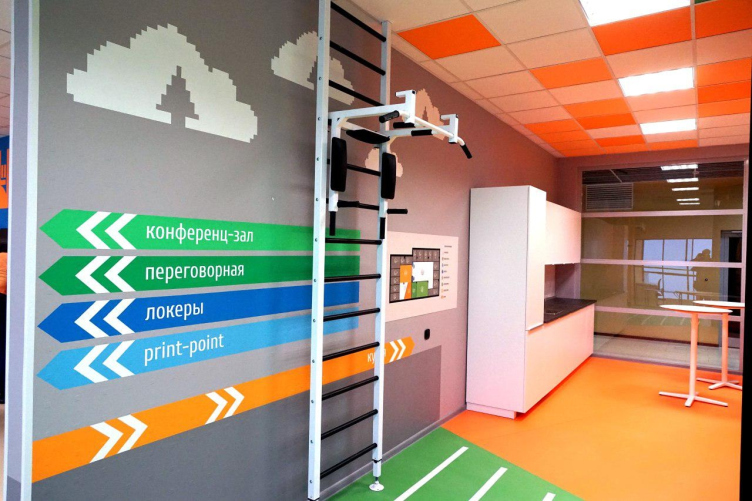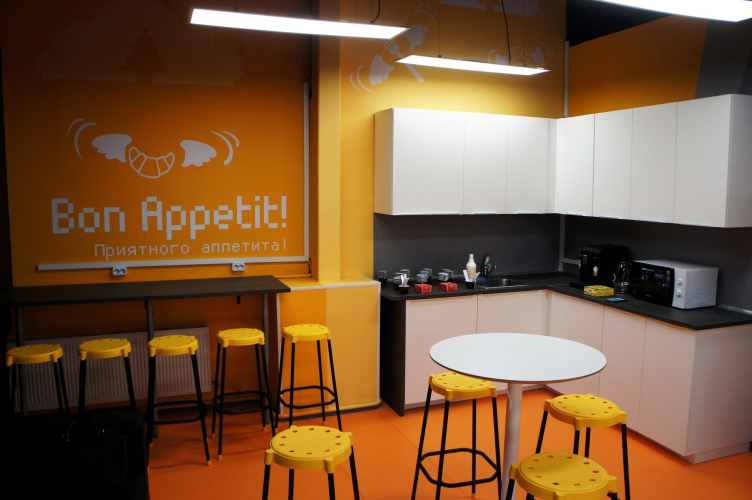– The first coworking spaces opened at ArtPlay about five years ago; there was also a coworking space in the format of a library combined with a meeting room, with literature addressed to architects and designers, with coffee points and a Wi-Fi hotspot. But these places weren’t much of a success – probably because they did not meet the needs of those whom they were originally designed for, they were not specifically targeted. At the same time, however, in the western countries coworking spaces were created as a place where a person could at once develop his startup project and enjoy the “club” atmosphere which is attractive to people who have similar goals. You discuss Ideas over a cup of coffee, you hear alternative opinions, and this brings about some sort of synergy: I do, I work, we work. All is based on the idea that like-minded people get together at one place.
At the same time, Internet technologies were developing, startup as a business model grew ever more popular, and coworking spaces began to draw crowds of young people who needed a super-fast internet connection and 10 square meters to start up their own business. The market formed the demand for that.
Coworking spaces START. Balashikha © PANACOM
Coworking spaces START. Balashikha © PANACOM
Coworking spaces START © PANACOM
– When and how did designing coworking spaces become a professional task for PANACOM?
– For PANACOM, the topic of coworking spaces came up in 2016 when I met the leaders of RE Group. There was a competition for the coworking spaces named “Start”, which were to be built in the Moscow area. PANACOM was ultimately chosen because we already had experience in designing interiors of various formats; we are not just architects but we are also graphic designers, industrial designers, and we were very quick to come up with the concept for the competition. Within four months we developed a cost-efficient solution for 5000 square meters at ten locations. Our client had quite ambitious plans for developing his chain in the Moscow area cities, and then going national with a franchise. They had a support from the Ministry of Innovation and Development, from the local communities, and the suitable venues were also quick to appear. The first five coworking spaces “Start” opened in 2016, as eary as in 2017 they opened the four coworking spaces designed by PANACOM, and in February and March six more new spaces will open. The coworking spaces got a name of “Start” because it is resonant with the term “startup”, like the beginning of the ascent, and its logo essentially looks like an arrow pointing upwards. In addition, the name is symbolic of achievements in business and sports. Oh, and by the way, each of the coworking spaces provides a place for active recreation, like fitness equipment, body builders, billiards, and air hockey. In the interior design, we used symbols connected with the business theme – bitcoins, rubles, dollars, fragments of graphs and analytic reports. What makes the coworking spaces “Start” different from their foreign and domestic analogues is the fact that they have a clear target audience: it is communities of people who want do develop and grow professionally.
Coworking spaces START © PANACOM
– What were the specifics and challenges of working on this project?
– We had a formidable task of coming up with one single solution which could be extrapolated to various locations. What the interiors of the coworking spaces have in common is the mobility and flexibility (from small offices to large open space zones), and the necessary full-in setup: an auditorium, a large kitchen with a coffee point, a print point, an idea pin board, and modular furniture.
We took only the best, casting away everything we didn’t need, in order to meet the budget constraints: the maxi investments were the walls and the infrastructure. We designed furniture that was made by the Russian company Z-Office.pro. This is a kind of furniture of the middle price segment, but the order itself turned out to be so big (1000 tables) that the client got it on very favorable terms. What we also did was develop the animated graphics and the navigation system with a recognizable style and language. This is what sets our solution apart from the ones that came before us in 2016.
Coworking spaces START. Klin © PANACOM
Coworking spaces START. Klin © PANACOM
Coworking spaces START. Klin © PANACOM
Coworking spaces START. Klin © PANACOM
– What is the difference between a coworking space and a regular office, from the standpoint of the author that is designing it?
– The main difference lies in the fact that an office is designed in accordance with the needs of this or that specific company that is going to be quartered here. A coworking space is different – it is created for a conditional client who will be coming here at his desire, and our job is to make sure that he does develop such a desire.
Unlike the office situation where everyone is working more or less on one and the same task, a coworking space is a place where people with different ideas and projects meet. The proverbial cup of coffee is shared by the people who may be into developing space technology, writing stories for children, doing a biology research, and whatnot. This is a cluster, and it simply has to be versatile, accessible and simple to understand.
Then you have to balance out the proportions of the zones: less open space, more cubicles. This has to do with the fact that open spaces with hot desks are visited only occasionally, from time to time, and a coworking space is interested in business residents who prefer mini offices. Here, in addition to the square footage and the Internet, the users are getting other services, such as legal, accounting, and consulting. Our “Start” lecture halls are equipped with all the necessary presentation electronics and they house up to 70 people. These places are visited by “advanced” me municipality officials and businessmen who feel responsible for the development of their cities.
Coworking spaces START. Kolomna © PANACOM
Coworking spaces START. Kolomna © PANACOM
Coworking spaces START. Kolomna © PANACOM
Coworking spaces START. Kolomna © PANACOM
Coworking spaces START. Lyubertsy © PANACOM
– Do our Russian coworking spaces look like their western counterparts or are there any differences, conditioned, for instance, by our specific environment?
– We did a research of foreign projects – all of them are sophisticated and very flashy in terms of interior design. Originally, our client would say to us: “I want exactly this kind of thing”, but all these variants were prohibitively expensive. We optimized the project by removing the niches and decorative backlights, leaving just the bare necessities. Some volumetric solutions turned into a 2D format becoming flat graphics and prints. Wherever the pictograms and symbols were applied, the walls were leveled out; otherwise, the surfaces were just filled with color. But then again, our clients did pay for the glass partitions for mini offices, and this is how our space got “aquariums” designed for the work of small resident teams.
Coworking spaces START © PANACOM
Coworking spaces START © PANACOM
Coworking spaces START © PANACOM
Coworking spaces START © PANACOM
Coworking spaces START © PANACOM
– What did the experience of working with such a typology give to you?
– Before we did “Start”, we designed about 3000 square meters for the so-called “Open Government of Moscow”. This is the place where the city people will be coming to see, at what stage of processing their applications are, whether or not the parking or waste disposal issues are solved, and so on. The project was developing on the coworking principle, and we fine-tuned a lot of technologies, aspects of interaction between the employees and the visitors, abs the organization of space in general. And, although this is not a coworking space from a purely functional standpoint, the similarities are apparent.
Design of things and architecture are changing, as well as the streets and overall look of the cities; particular importance is given to public spaces. Sometimes you cannot even tell where interior ends and outdoor area starts – we work everywhere where we can get a Wi-Fi connection. But such a diffusion of micro and macro scales must be reflected in the architectural environment.
This shift of interests of the development sector in the direction of mixed-use projects has to do with the dramatic change in the lifestyle: we no longer discriminate between work and private life, we value our time and we want to get services quickly and preferably within one space. Researching this problem in terms of town planning, I put forward the term “spa-working” – meaning, organizing a really comfortable and functional environment for productive and harmonious work. And the coworking spaces “Start” are beginning to implement these ideas.
Coworking spaces START © PANACOM
Coworking spaces START © PANACOM
Coworking spaces START © PANACOM
Coworking spaces START in the cities of the Moscow area:
Serpukhov 460.6 sqm
Stupino – 453.5 sqm
Mytishchi – 481.8 sqm
Lubertsy – 395.8 sqm
Noginsk – 513.8 sqm
Shchelkovo – 934.4 sqm
Klin – 571.6 sqm
Balashikha – 433.4 sqm
Kolomna – 491.9 sqm
Pushkino – 556.7 sqm
